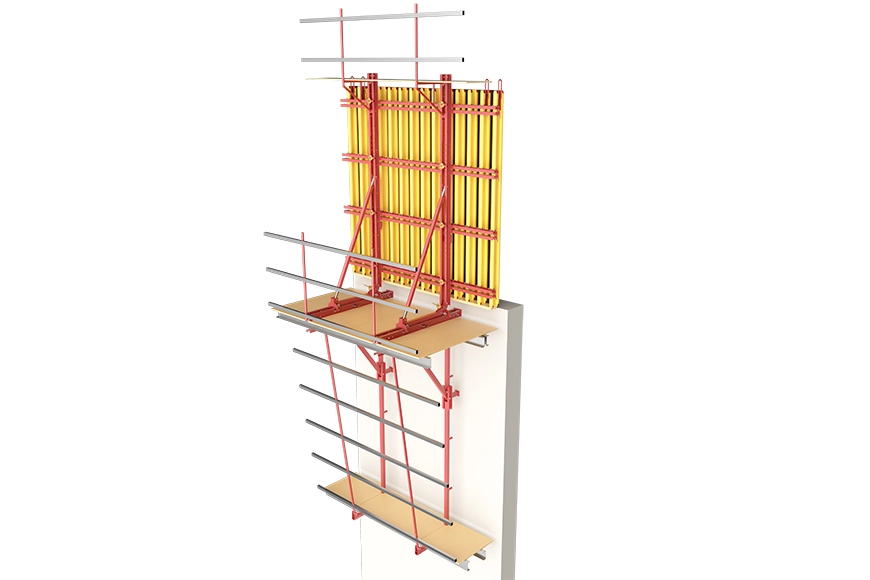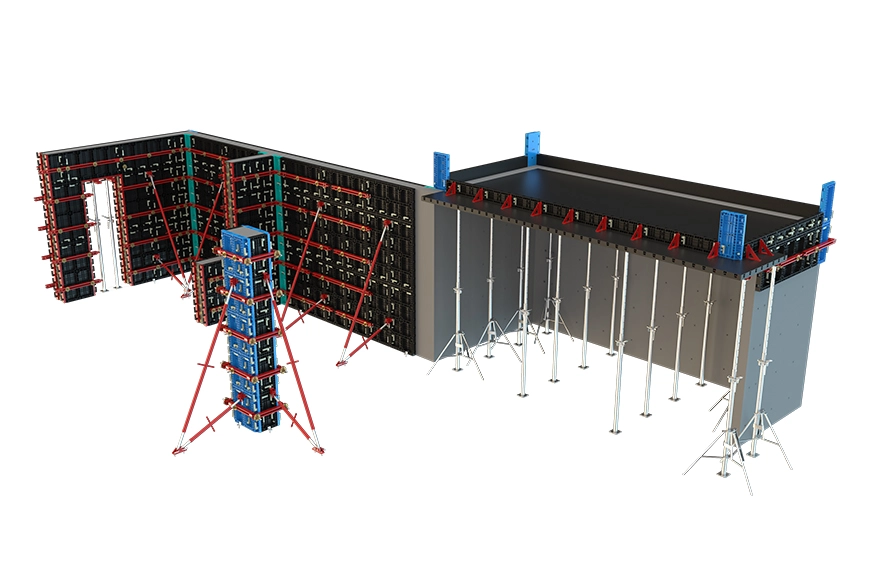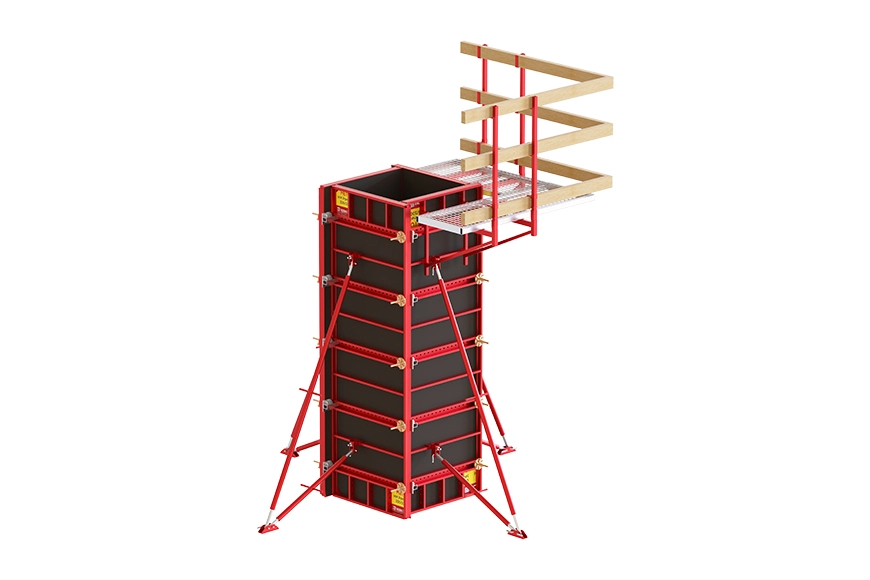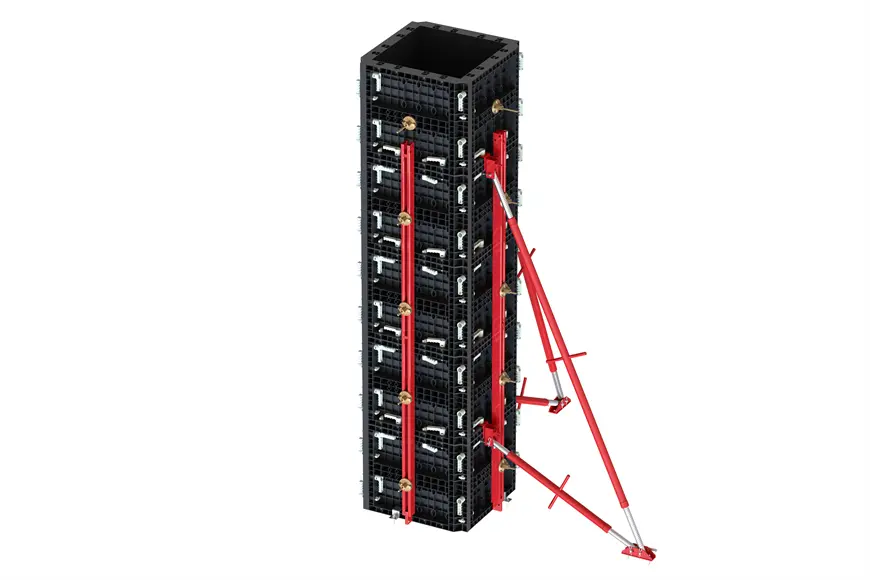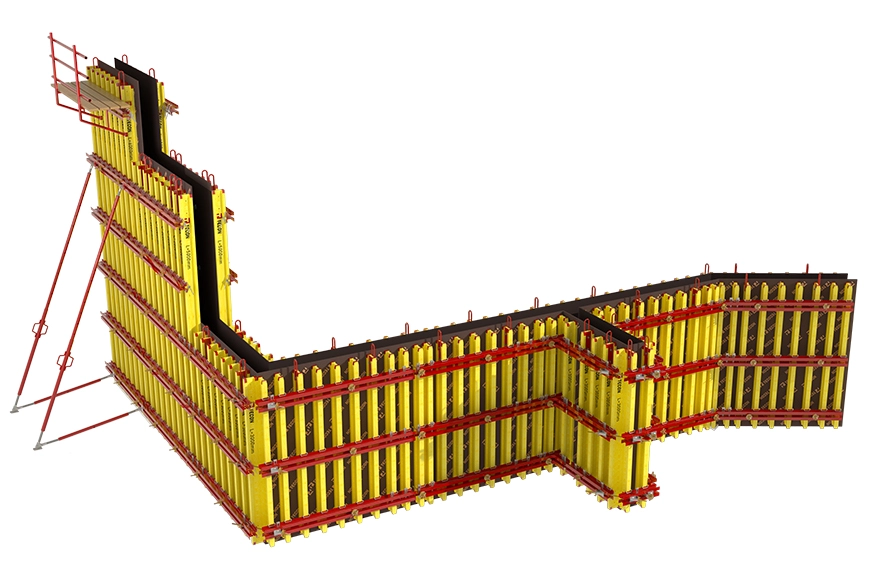In recent years, the construction industry has developed rapidly, which has brought a larger and more diversified use of building formworks. Nowadays, building formworks can be divided into the following formwork types.
Steel formwork can be divided into small steel formwork and large steel formwork. The average weight of the small steel mold is about 50-60kg/m2, and mechanical equipment must be used for hoisting. There are also more seams when used, so the frequency of use in existing projects has decreased. The average weight of the large steel mold can reach more than 100kg/m2, and it is completely dependent on mechanical hoisting in use. The advantage is that there are fewer splicing joints and the overall flatness of the concrete is high. The steel formwork needs to be actively maintained during on-site use, or the surface quality of the concrete will be greatly affected. Large steel molds have good applicability in large-format projects with good hoisting conditions at the construction site, such as subway side walls, bridge piers and other structures.
The average weight of the aluminum alloy formwork is about 25kg/m2, which can be handled manually. The formwork is characterized by good processing performance and a complete construction system. In the construction of high-rise buildings, the early demolition process effectively speeds up the turnover efficiency of the roof formwork and reduces the input amount of the roof formwork. After the aluminum alloy formwork is processed by the surface treatment process, the oxidation reaction with the concrete is isolated, and a better concrete forming effect can be achieved. However, its disadvantage is that due to the price of raw materials, the unit price of the product is much higher than other formworks, so this formwork is only suitable for construction projects with a large number of turnovers, simple structure and less variable cross-section. It is especially suitable for high-rise residential formwork projects with simple facades, no changes/fewer changes between floors, and high turnover. For projects such as pipe corridors and underpass tunnels with simple structures, although the proportion of standard slabs is high, the construction period is much longer than that of housing construction projects. Therefore, it will greatly extend the payment cycle of the formwork, so it should be carefully selected.
Plastic formwork is a series of plastic plates with thermoplastic rigid plastic as the main base material, which can be divided into hollow plastic formwork, sandwich plastic formwork and ribbed plastic formwork. The advantages of the hollow plastic formwork are easy to use and good on-site processing performance. But its disadvantage is that the thermal deformation is large, and it is prone to warping and deformation in high-temperature weather. Plastic ribbed formwork is a new type of reinforced plastic formwork that has emerged in recent years. When making the formwork, the back rib design improves the stress structure of the formwork and improves the overall performance of the formwork.
